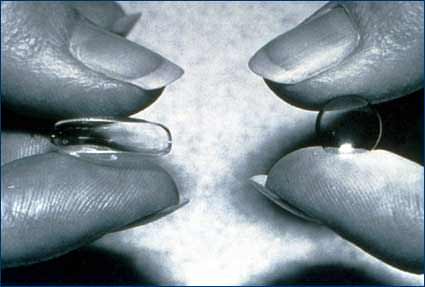Contact Lenses in Lancaster, PA
- Home
- Contact Lenses in Lancaster, PA
Also Serving Patients in Lititz, Elizabethtown, and Mount Joy

What are Contact Lenses?
Contacts are thin, clear discs that float on the tear film that coats the cornea, the curved front surface of the eye. Contacts correct the same refractive conditions eyeglasses correct: myopia (nearsightedness), hyperopia (farsightedness) and astigmatism (an oval- rather than round-shaped cornea).
Types of Contact Lenses
Contact lenses can be made from a number of different plastics. The main distinction among them is whether they are hard or soft. Most contact lens wearers in the United States wear soft lenses. These may be daily wear soft lenses, extended wear lenses or disposable lenses. Toric IOLs soft lenses provide a soft lens alternative for people with slight to moderate astigmatism.
Hard lenses are usually not as comfortable as soft lenses and are not as widely used. However, rigid gas permeable lenses provide sharper vision for people with higher refractive errors or larger degrees of astigmatism.
Contact Lens Risks
The majority of people can tolerate contact lenses, but there are some exceptions. Conditions that might prevent an individual from successfully wearing contact lenses include dry eye, severe allergies, frequent eye infections, or a dusty and dirty work environment.
Individuals who wear any type of contact lens overnight have a greater chance of developing infections in the cornea. These infections are often due to poor contact lens care and cleaning.


